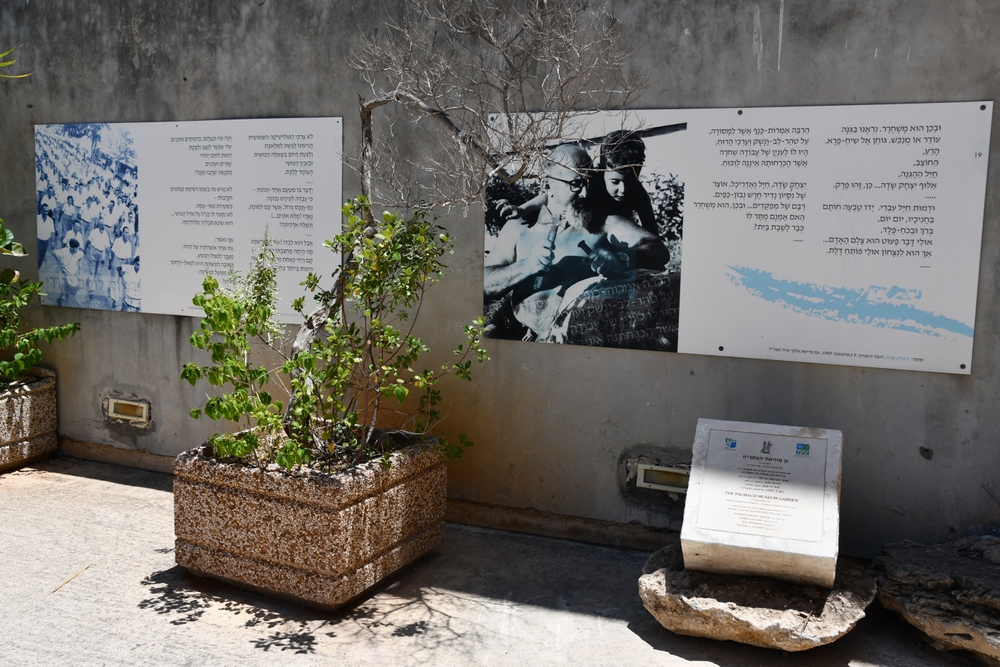
You won’t be disappointed by this unique museum that is dedicated to the pre-state underground Jewish organization, the Palmach. The Palamach was the strike force, or paramilitary branch of the Hagana Jewish defense organization that fought for the right to a Jewish homeland in Israel during the British Mandate period from 1920 to 1948. Following the establishment of the State of Israel, Hagana, and Palmach were integrated into the Israeli Defense Force.
Pro Tip: If this period of history, and pre-state Jewish underground movements interest you then don’t miss a visit to the Lehi Museum and the Etzel Museum.
This museum has a brilliant design concept, it is an experiential museum which means that visitors walk through recreated scenes that bring history to life. Visitors will feel like they have joined the group of young Palmach recruits and then advance through the story of the Palmach from its establishment to the end of the War of Independence. Unlike conventional museums, the Palmach Museum has no boring displays of documents, instead, visitors are surrounded by three-dimensional décor, for example, tents and campfires. Then with the use of special effects, sound, film, and special lighting, the story of the Palmach unfolds around you.
Members of the Palmach were the military arm or combat reserve unit of Hagana responsible for protecting the Jewish settlements from Arab attacks, and British interference before the establishment of the State of Israel in 1948. The Hagana worked as an underground movement carrying out clandestine operations against British rule. Most of the Hagana’s sixty thousand members were volunteers. The Palmach was positioned across the country from Galilee and Haifa to Tel Aviv and Jerusalem. The commander of the Palmach was Yitzhak Sade.

In 1942, in an ironic turn of events, the Palmach found themselves working on the same side as the British against their shared enemy, the armies of Nazi Germany that threatened to enter Palestine via Egypt. The British trained Palmach members in guerilla warfare and prepared them for a German invasion. In their work with the British, some Palmach members found themselves parachuted into Europe.
This wasn’t the first time that the Palmach had collaborated with the enemy, the British. The Palmach also helped the British take Syria and Lebanon from Vichy French forces. During World War II, while the Palmach worked with the British, two other Jewish paramilitary movements, Lehi and Etzel chose to fight against the British. And so they found themselves being arrested by Palmach members who were taking their orders from the British. Some of the Etzel and Lehi members were detained and others were sent to detention camps in Africa until the end of the British rule in Palestine.
Once the war was over there was no reason for the Palmach to side with Britain, and so Palmach members began training and reorganizing itself as a fighting force with the goal of ousting the British and establishing a Jewish homeland. They carried out isolated attacks, and surprise assaults on the British.
The British turned their attention to suffocating the Zionist movement and preventing immigration of Holocaust survivors to the Holy Land. The Jewish underground movements facilitated the arrival of illegal immigrants despite the British. They assisted with establishing new settlements, armed struggles against the British, and mass demonstrations. Yegal Alon became the commander of the Palmach and a driving force behind the movement’s activities.
They participated in the freeing of illegal Jewish immigrants from the British detention camp at Atlit, bombed British patrol boats, attacked British police stations, and blew up bridges leading to neighboring Arab countries. In response, the British arrested many members of the Palmach on 29th June 1946 in an operation that came to be known as the Black Sabbath.
When the UN declared the establishment of a Jewish state, the Palmach had to turn their attention from the British to the Arabs who carried out vicious attacks on Jewish settlements.
At the beginning of the War of Independence, the Palmach consisted of 2,200 regular fighters and 900 reservists. The Palmach fought bravely in several critical battles during the War of Independence, defending Israel from invasion by Egypt, Lebanon, and Syria.
Groups of visitors are led through the museum progressing chronologically through the history of the Palmach where important events are highlighted. The tour begins and ends in the Memorial Hall where Palmach members who died fighting for the establishment of the State of Israel are remembered.
In the Memorial Room are 1,187 draws, one for each of the Palmach fighters who lost their lives between 1941 and 1949. Each draw contains the Palmach member’s file with details about his activity in the organization as well as photos and letters. There is a computer in the Memorial Room where visitors can print information from the files.
Important: You can’t visit this museum without booking in advance via the museum website or by phone. The visit has to be prearranged whether you are coming alone or with an organized group. If you are visiting independently, and not with an organized group the museum will add you to one of the groups. The museum guide takes groups of up to 25 people through the exhibits.
Palmach House was constructed by the Dor Hapalmach Association specifically to provide a home for the Palmach legacy and a place where today’s generation can learn about the Palmach. The Dor Hapalmach Association gave the building to the Ministry of Defense which runs several museums related to Israel’s military history. Today Palmach House is operated by the Ministry of Defense’s Department of Museums. The Palmach Museum is located in Palmach House together with the Palmach photo gallery, archive, memorial room, and library.
Pro Tip: In the Palmach House courtyard is a cafe serving a dairy menu.